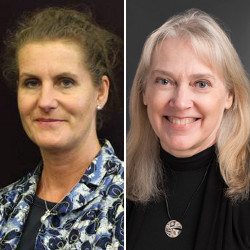
As we celebrate ACM's 75th Anniversary this year, it seems a fitting time to consider the community that ACM has fostered. ACM was founded to support the science of computing and over the years has continued to do this in many ways. We began as a national organization of 52 members called the Eastern Association for Computing, reflecting the initial local scope of its founding members. "Eastern" was dropped a few months later, with the recognition that the organization could eventually reach far beyond what was initially envisioned. In the early years, ACM was comprised entirely of members and volunteer leaders, with paid staff only being hired later as the organization grew beyond what could be supported solely by the members' efforts.
It is a strength of ACM that it has continued to grow and develop new programs. In the 1960s, Special Interest Groups (SIGs) were started, recognizing that professionals would want to connect not only with the computing profession in general, but also with others interested in their areas of specialization. Today, there are 38 SIGs, giving many a sense of professional community in their areas of greatest focus. In the past two decades, ACM also has grown to include Regional Councils that provide recognition and support for initiatives within their region of the world. ACM's programs have grown to provide services to a large global community: as a publisher and archivist of computing's literature, as a developer of curricular guidelines used worldwide, as a source of impartial technical information for policymakers, and as a channel for multiple programs supporting lifelong professional development.
For us (the authors, and we know for many members like us), involvement in ACM began with a desire to be part of our own community of computing professionals. From that, volunteer activities with Regional Councils, SIGs, and ACM's publishing processes naturally emerged. These varied opportunities directly arose because of the strength and diversity of the whole ACM community.
Local and area specializations have become a core part of our mission. But it is important to keep in mind that all are part of the larger ACM. It is easy to forget this and doing so can easily lead to unnecessary divisions. While it is common for individuals to identify primarily, for example, with one of the Regional Councils, or one of the SIGs, we see that some members view their identification with these groups as somehow contrasting with their being part of the whole of ACM. The heart of the matter is what appears to be a sentiment by many that they are not part of ACM.
ACM faces another consequence of our growth: the perception that ACM is a business like any other. It is a hard reality that a large multinational, multipurpose organization cannot exist without a solid legal and financial foundation. Without these, Regional Councils, our nearly 200 conferences, ACM publishing, and a host of other impactful ACM activities could not be pursued. The financial stability of the organization serves as the essential backstop allowing contracts to be signed and commitments honored. It is only through the strength of ACM as a whole that this is possible.
We have heard some within ACM speak of "ACM" as if it were something apart from them. We strongly believe it is those in the total ACM community who make ACM the very special and world-leading organization that it is. It is the dedicated volunteers devoting countless hours to leadership, reviewing, committee work, and service who drive ACM activities. It is the ACM members, and many non-members as well, who participate in the larger community and are served by it. It is the dedicated ACM staff who work with and support volunteer leaders and members in numerous ways. And it is also the nearly four million individuals globally who benefit each year from ACM resources, such as the ACM Digital Library.
ACM's structure does in no way lessen our commitment to serving the global computing community. Rather, it enables it, allowing us to support those driven by a vision of what computing as a discipline can accomplish and what we, being joined together in ACM, can accomplish. We need to keep in mind that ACM and its various groups are not at odds with each other. Rather, we are one, working together to make progress possible for all.



Join the Discussion (0)
Become a Member or Sign In to Post a Comment